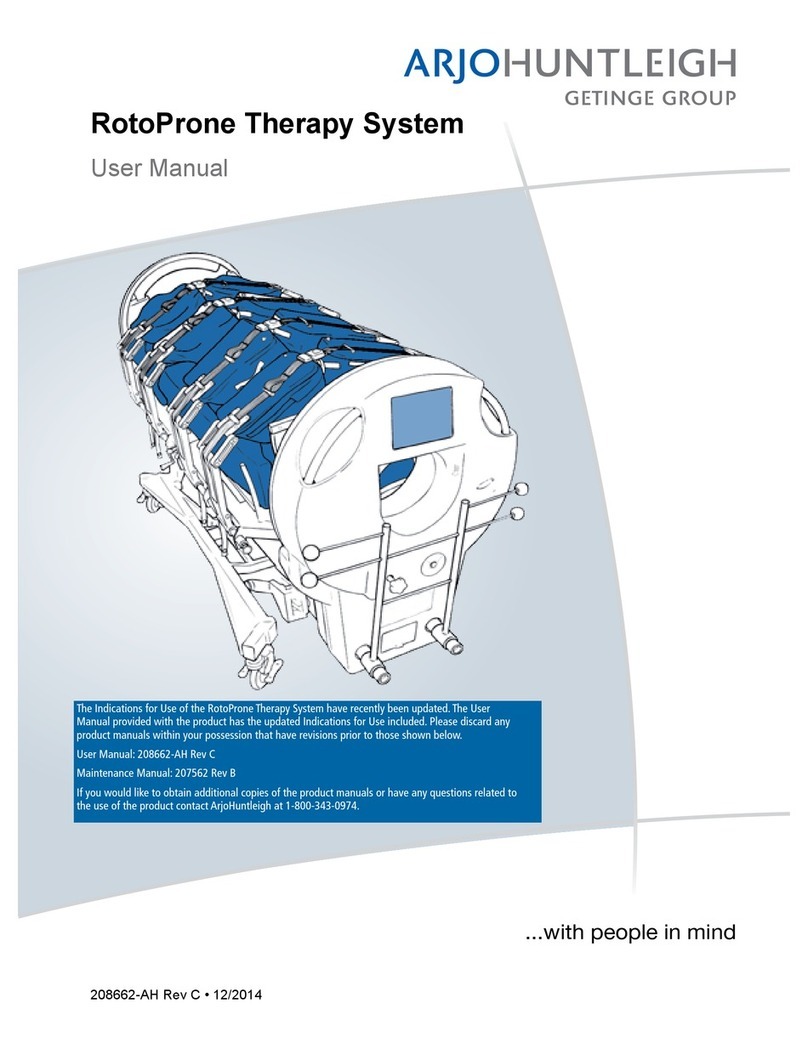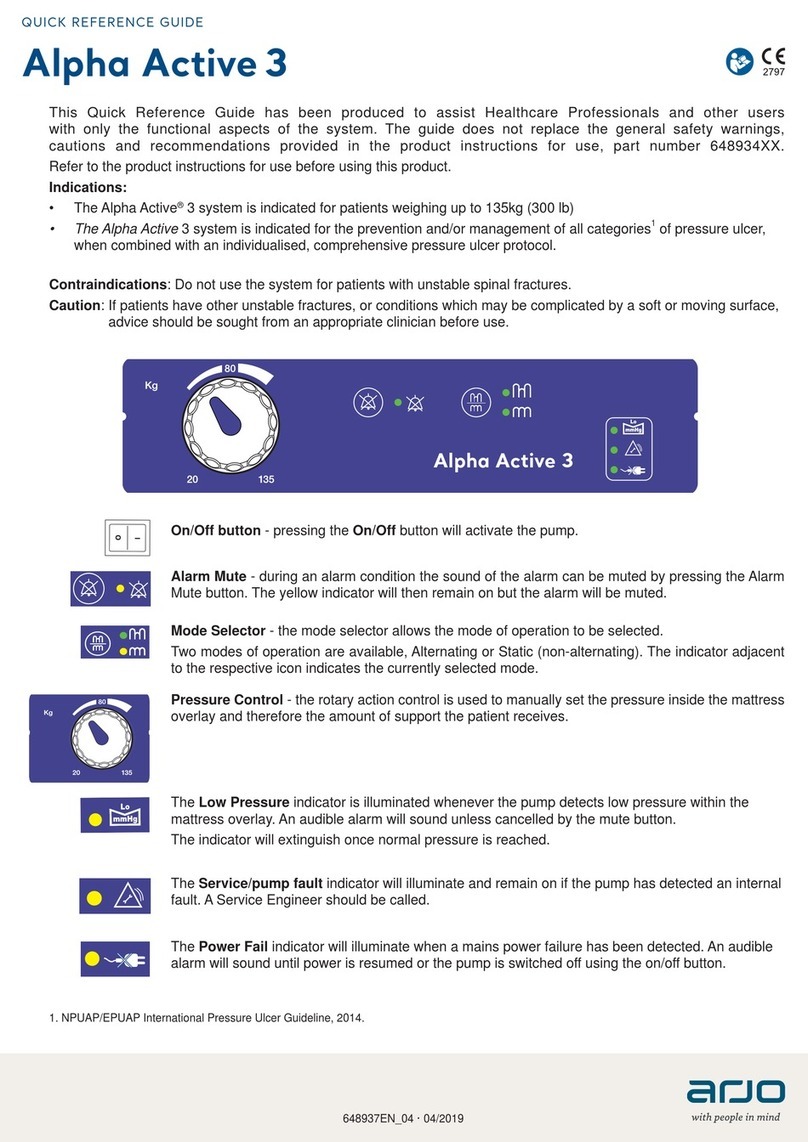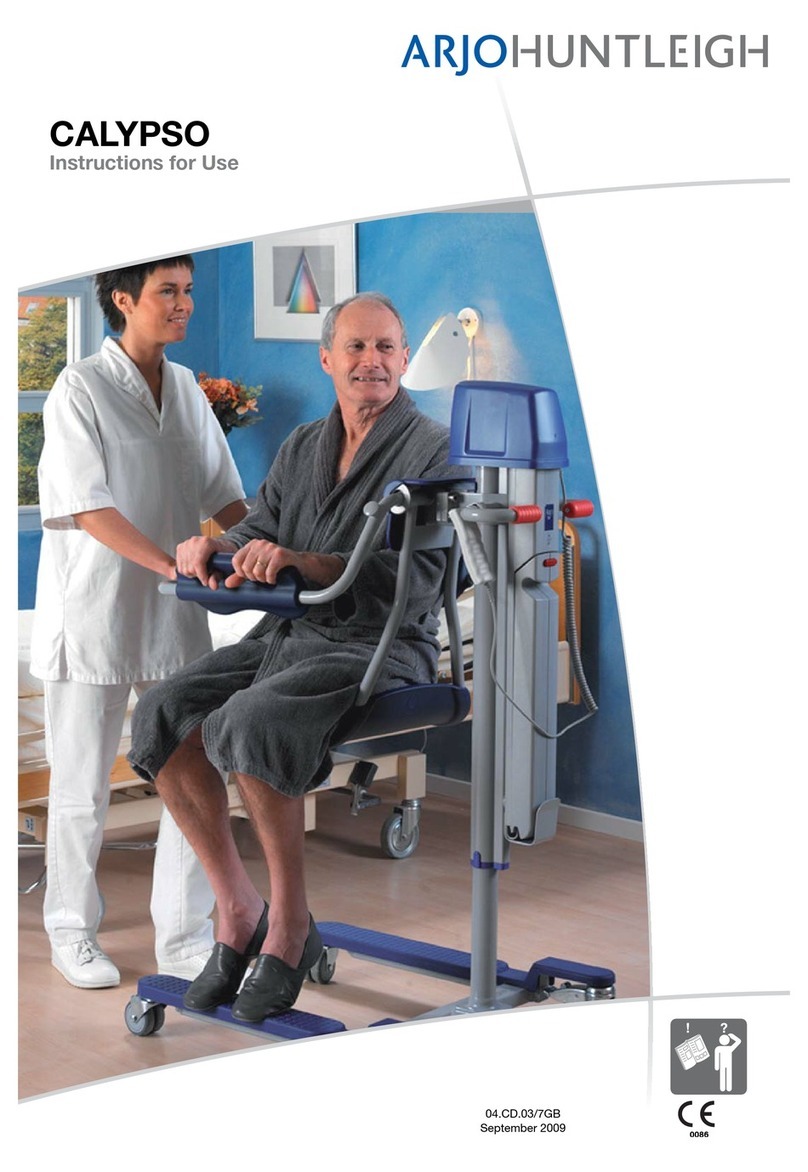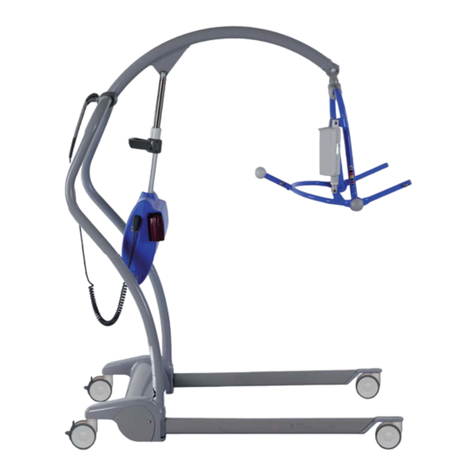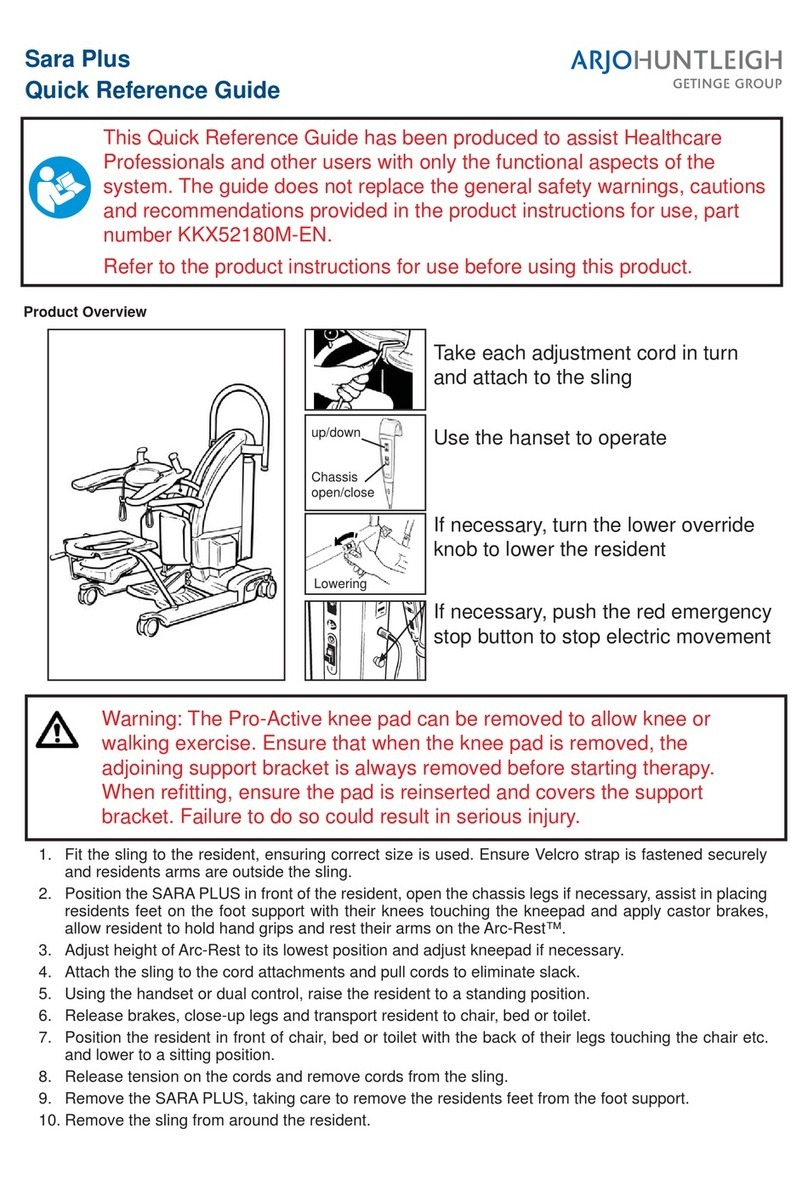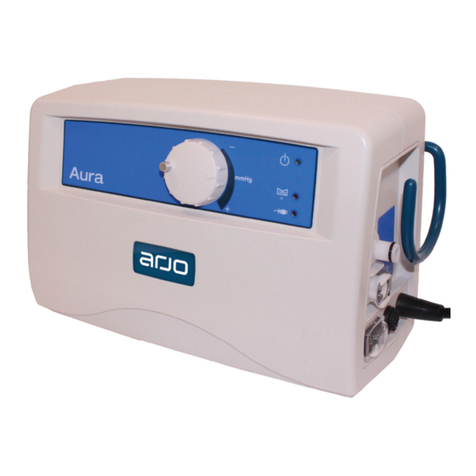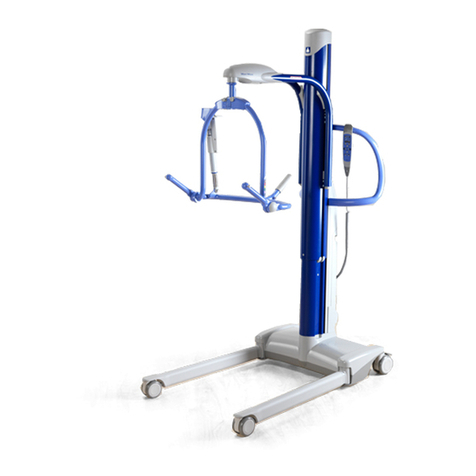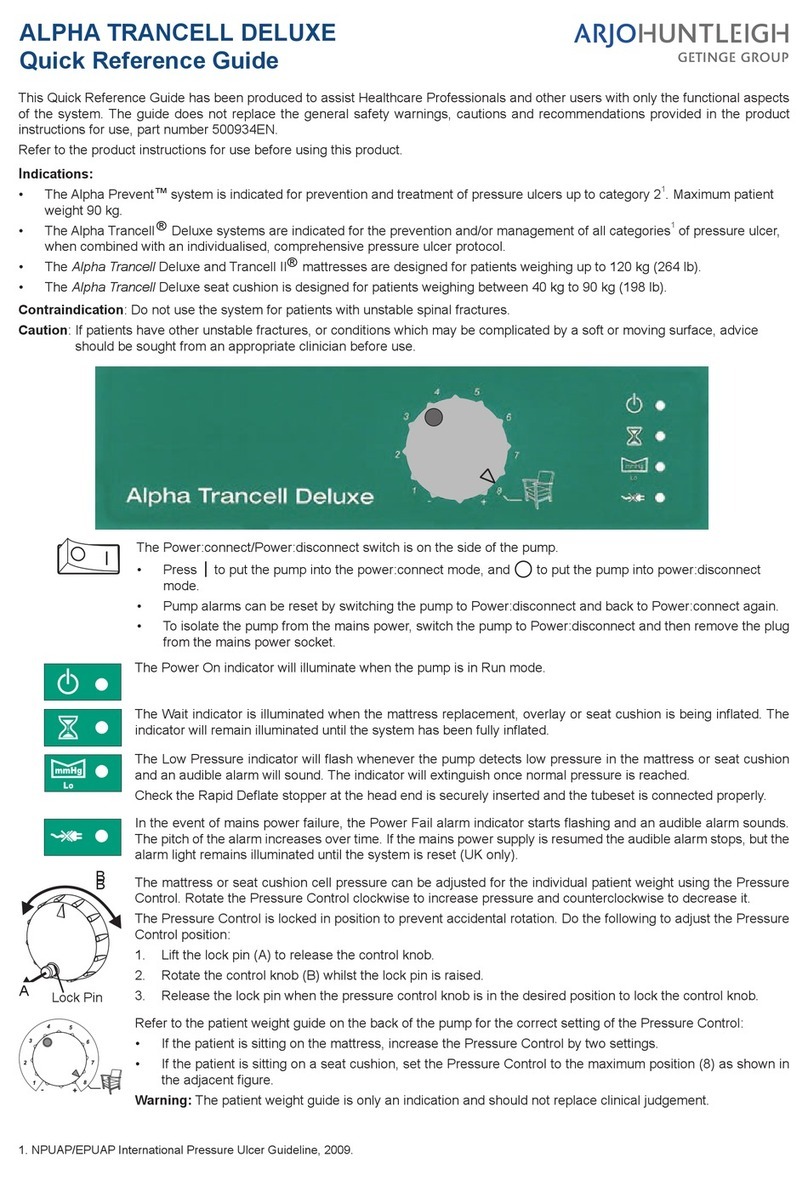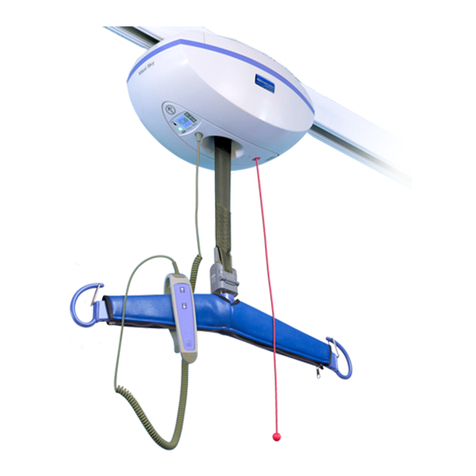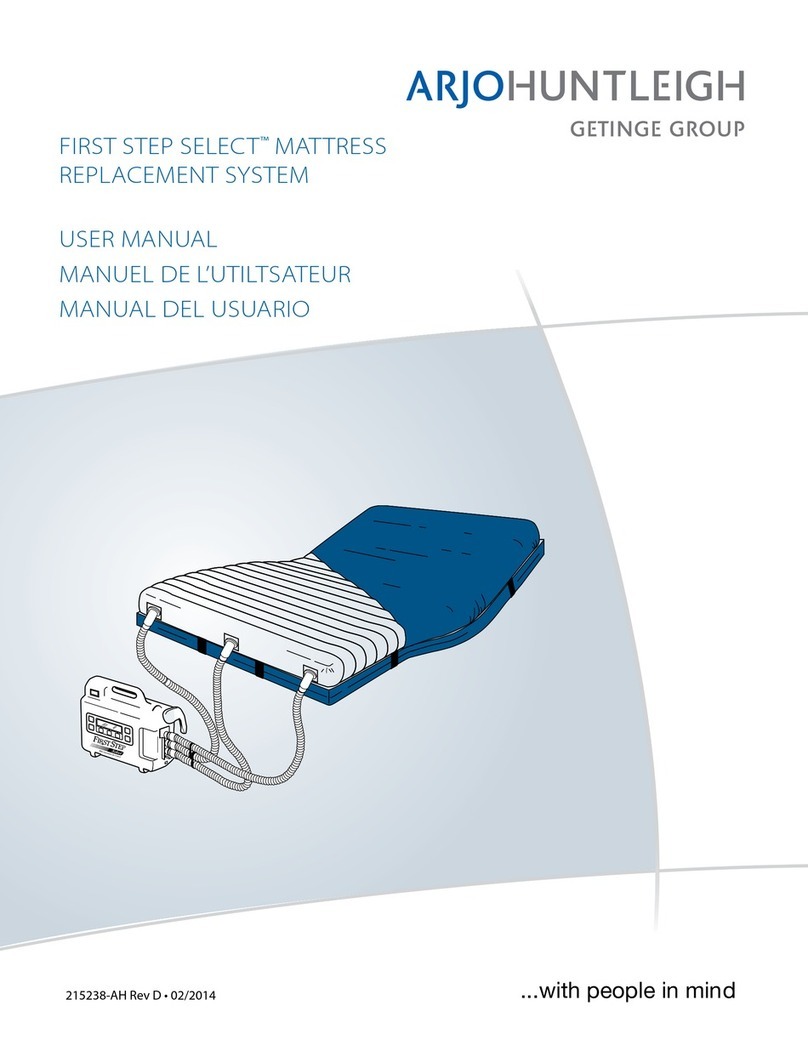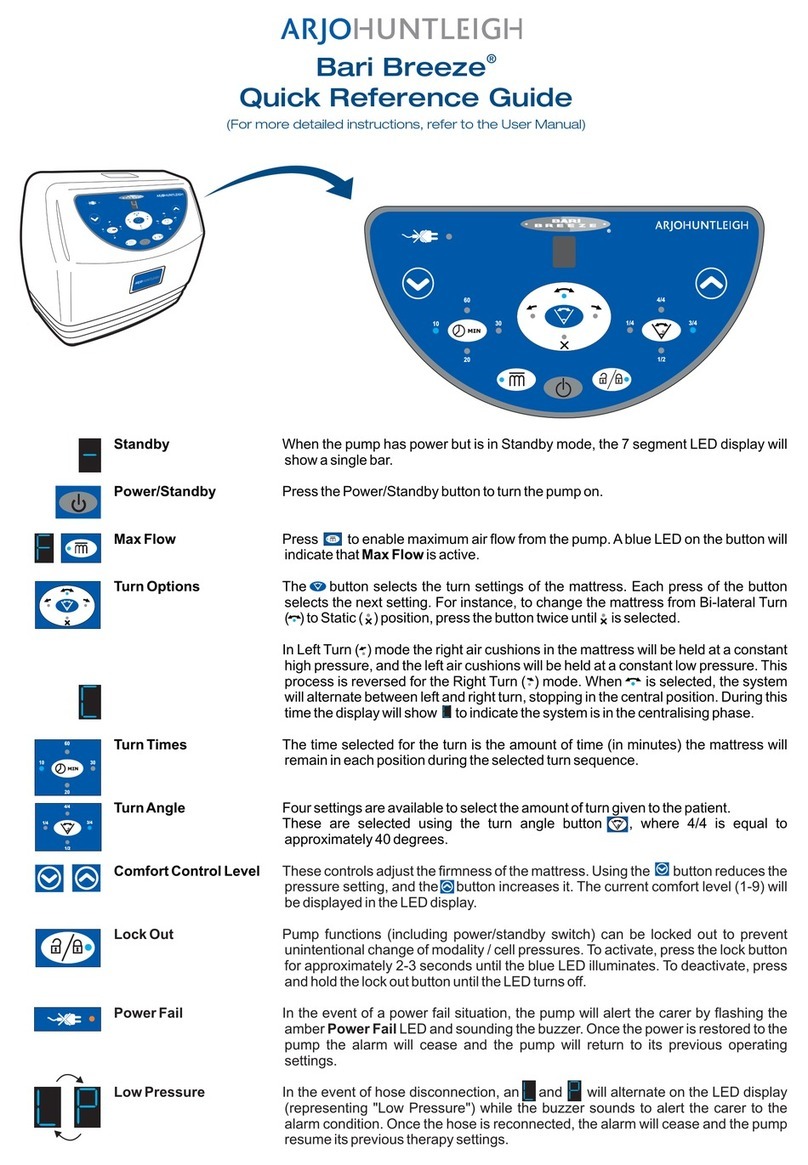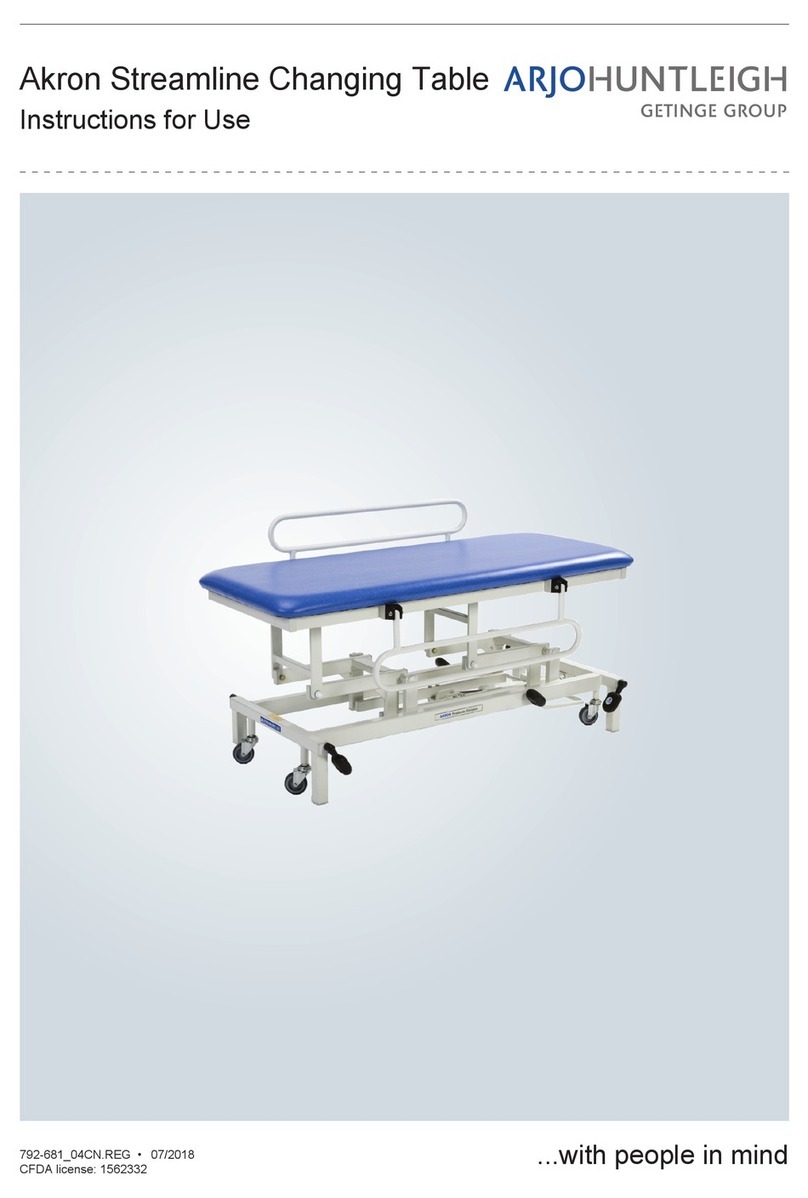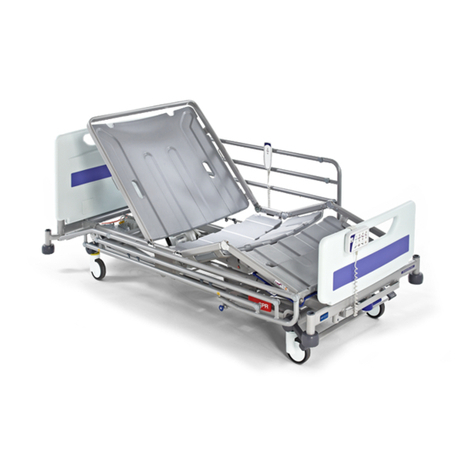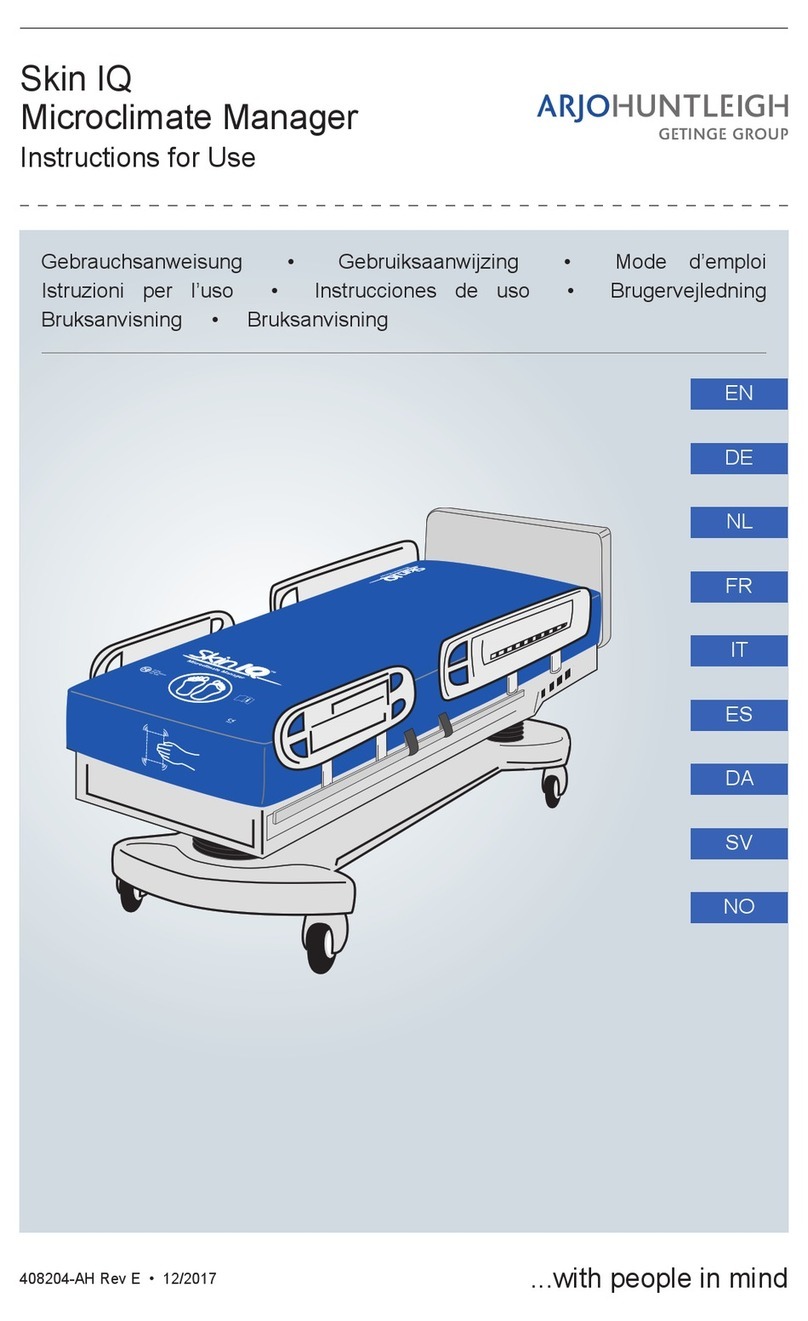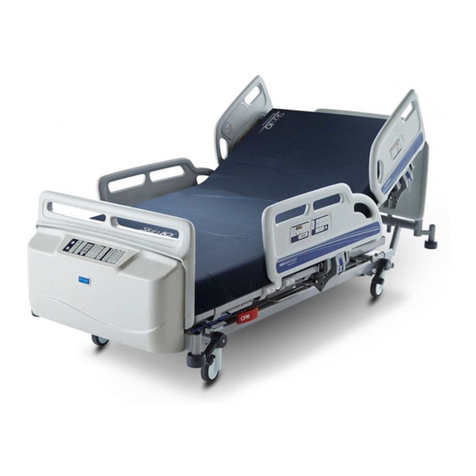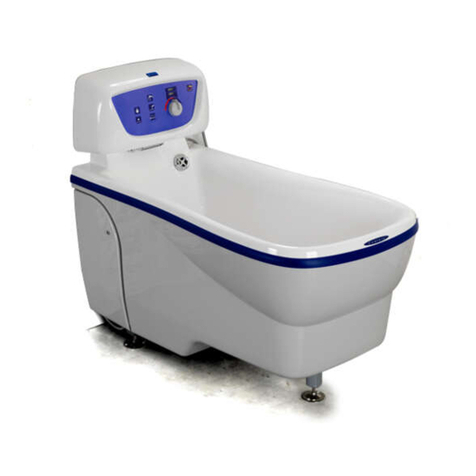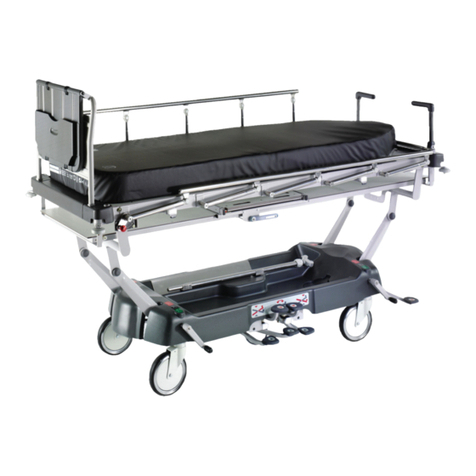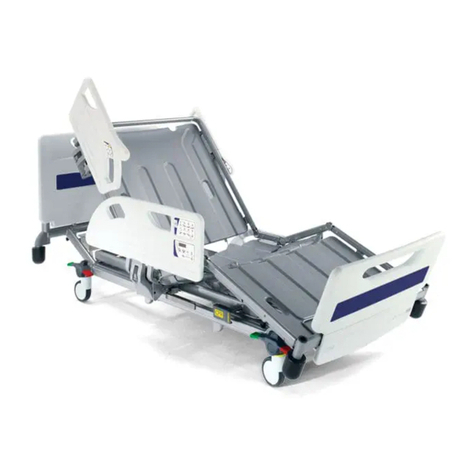
Safety Instructions
8
001.08075.EN rev. 16
Shock Prevention
• Do not touch or use a lift with bare conductors
or a damaged power cord. If this is the case,
contact your local ArjoHuntleigh agent
immediately.
• Do not splash or expose the device to water or
moisture.
• Check nameplate for input voltage and
frequency requirements. These ones differ by
country. Do not attempt to use the lift in an area
that has a different voltage and frequency
requirement.
• Read batteries and charger instructions
carefully before using or storing them.
Fire and Explosion Prevention
• Do not place or store the battery under direct
sunlight or near a heat source.
• Do not expose the batteries to flames. They
might open, causing a chemical leak.
• Do not use the charger in the presence of
flammable anaesthetic gases. The charger
might generate a spark, which could cause an
implosion.
• Do not short circuit the battery terminals.
Human and Environmental Safety
Practices
• Should the battery casing crack and cause
contents to come in contact with skin or
clothing, rinse immediately with plenty of
water.
• If contents come in contact with the eyes, rinse
immediately with plenty of water and seek
medical attention.
• Inhalation of the contents can cause
respiratory irritation. Provide fresh air and
medical attention.
• For recycling and disposal of the batteries, the
rules according to the WEEE directive (Waste
of Electronic and Electrical Equipment) as well
as local laws and regulations must be followed.
If not they may explode, leak and cause
personal injury. When returning batteries,
insulate their terminals with adhesive tape.
Otherwise, the residual electricity in used
batteries may cause fire or explosion. When
disposing of any items associated with the
equipment, contact the appropriate local
authorities for information. Fig. 2 shows the
symbols for disposal and recycling.
Fig. 2
Environmental Advice
When disposing of any items associated with the
equipment, contact the appropriate local
authorities for information.
Battery and Battery Charger Safety
Practices
Only use batteries designed for use with the
device. If unsure, do not use the battery. Make
sure it belongs to the device by comparing the
battery label with the technical specifications in
the Instructions for Use. If battery type cannot be
confirmed, call your ArjoHuntleigh agent.
• Do not expose the battery or chargers to
flames.
• To avoid bodily injury, do not crush, puncture,
open, dismantle or otherwise mechanically
interfere with the battery.
• Stop using the battery if any damage or
deformation is noted.
• Be careful not to drop the battery.
• Only use the charger that has been supplied
with the product.
• Do not charge the battery in an unventilated
area.
• The charger must not be covered or exposed
to dust.
• The charger is designed for dry areas only and
for normal air humidity conditions.
Homecare Environment Considerations
NOTE: Following the instructions is
important to prolong the battery life.
WARNING: The Voyager is not intended to
be operated by children. Serious injuries
could occur.
NOTE: Rigorous cleaning actions should be
done when the Voyager is exposed to an
animal. Pet hair trapped inside the device
(through the strap opening) can reduce the
product performance.
